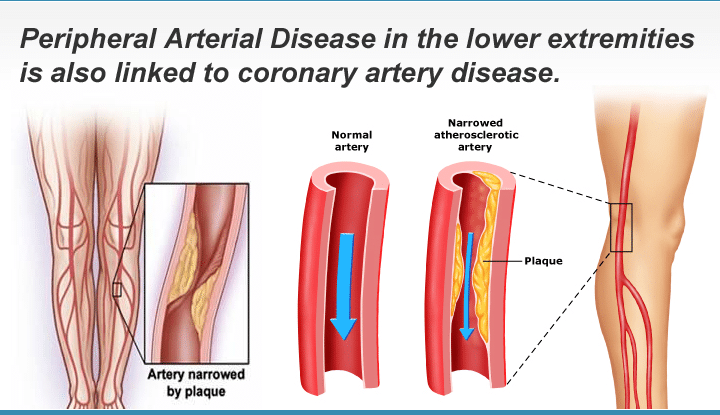Who Can Get Peripheral Artery Disease?
It is estimated that 1 out of every 20 Americans over the age of 50 has Peripheral Artery Disease (PAD) or Peripheral Arterial Disease. However, the presence of certain diseases and conditions may cause the development of PAD earlier in life. These conditions include smoking, diabetes, high blood pressure and high cholesterol levels. African-Americans are more than twice as likely to develop PAD compared to Caucasians.

What Are the Symptoms of Peripheral Artery Disease?
Loss of hair on legs
Color change in skin of legs or feet
Aching in feet or toes when resting
Cold legs or feet
Sores on legs or feet that won’t heal
Aching in feet or toes when resting
Leg or hip pain that stops when you cease activity
What Puts Me at Risk?

The main risk factor for Peripheral Artery Disease (PAD) is smoking or a history of smoking. You can slow the progress of PAD if you quit smoking now.

People of older age are at a higher risk of developing Peripheral Artery Disease because plaque builds up in the arteries over time.

Some diseases and medical conditions, such as Diabetes, High Blood Pressure, High Cholesterol, Heart Disease, and Stroke, may raise your risk.
How Is Peripheral Artery Disease Treated?
Precision VIR uses state-of-the-art procedures to treat Peripheral Artery Disease. Our expert doctors will carefully evaluate each patient to formulate an individualized treatment plan. Our treatment goals are to: 1) Manage symptoms, such as leg pain, so that you can resume physical activities to improve mobility and overall quality of life, and 2) Stop the progression throughout your body to reduce your risk of heart attack and stroke and prevent complications. Treatment is based on your signs and symptoms, risk factors, and the results of physical exams and tests.
Schedule an Appointment
Request an appointment with our specialists for a Peripheral Artery Disease (PAD) evaluation.
